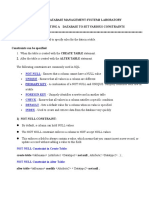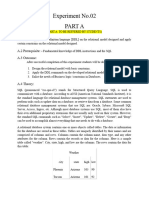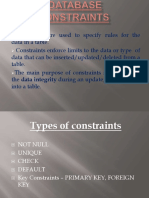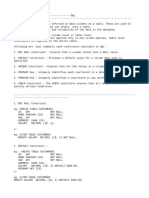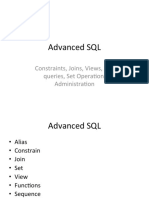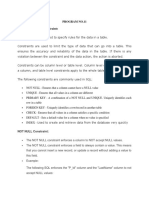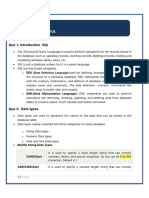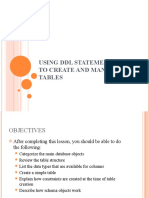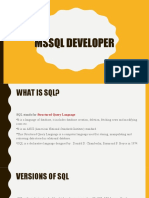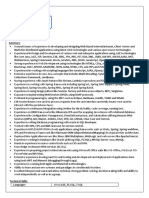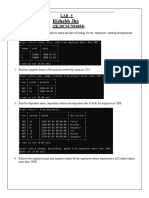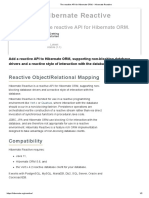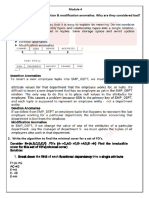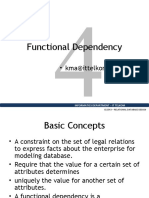0% found this document useful (0 votes)
20 views5 pagesConstraints: Types of SQL Constraints 1. Not Null Cannot Contain NULL Values
The document outlines SQL constraints, which are rules that limit the type of data in a table, including NOT NULL, UNIQUE, PRIMARY KEY, FOREIGN KEY, CHECK, and DEFAULT constraints. It also describes various data types used in SQL, such as CHAR, VARCHAR, NUMBER, DATE, and Large Objects (CLOB and BLOB). Each constraint and data type is accompanied by examples to illustrate their usage.
Uploaded by
ramyag.kenproCopyright
© © All Rights Reserved
We take content rights seriously. If you suspect this is your content, claim it here.
Available Formats
Download as DOCX, PDF, TXT or read online on Scribd
0% found this document useful (0 votes)
20 views5 pagesConstraints: Types of SQL Constraints 1. Not Null Cannot Contain NULL Values
The document outlines SQL constraints, which are rules that limit the type of data in a table, including NOT NULL, UNIQUE, PRIMARY KEY, FOREIGN KEY, CHECK, and DEFAULT constraints. It also describes various data types used in SQL, such as CHAR, VARCHAR, NUMBER, DATE, and Large Objects (CLOB and BLOB). Each constraint and data type is accompanied by examples to illustrate their usage.
Uploaded by
ramyag.kenproCopyright
© © All Rights Reserved
We take content rights seriously. If you suspect this is your content, claim it here.
Available Formats
Download as DOCX, PDF, TXT or read online on Scribd
/ 5




